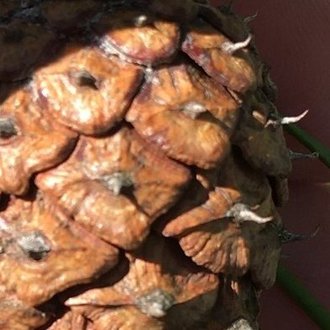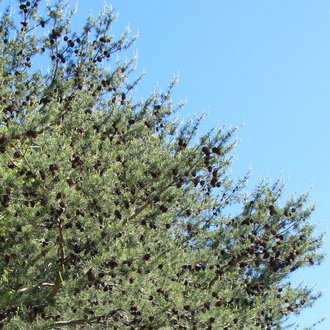Virginia Pine vs Table Mountain Pine
This guide is under construction and has not been published yet. It may have errors. When in doubt, double-check other sources for definitive ID.These two pines are easily confused where their ranges overlap in the Appalachians; their habitats overlap, and in the same habitat they have a similar form. They can be distinguished most easily by cones, occasionally by needles as well. Virginia pine is more likely to occur at lower elevations, whereas Table Mountain Pine is found at higher elevations on steeply sloped terrain with dry, rocky, shallow soil.
Virginia Pine (Pinus virginiana) | Table Mountain Pine (Pinus pungens) |
A short-needled pine native mostly to the Appalachians and nearby, growing as a pioneer species on dry sites in hilly terrain. | A scrubby pine of exposed, rocky sites, mostly found at high elevations in the Appalachians. |
All cones open at maturity, but open cones remain on tree for up to 5 years. Photo © CK Kelly, CC BY 4.0. | Some cones open at maturity, but others remain closed until opened by fire or gradually by hot weather; cones may stay on the tree as long as 20 years. Photo © Erik, Public Domain. |
Cone scales tipped with a narrower "prickle". Photo © Melanie Link-Perez, CC BY 4.0. | Cone scales tipped with a more robust "claw". Photo © Doug Goldman, CC BY 4.0. |
Needles consistently 2 per bundle. Photo © botanygirl, CC BY 4.0. | Needles either 2 or 3 per bundle. Photo © stinger, CC BY 4.0. |
Photo © laalv1, CC BY 4.0. |
References & External Resources
These short lists show only links helpful for ID. For a complete list of references and resources also covering other aspects of ecology, visit the links section of the full article on each plant, which is the first entry here.









